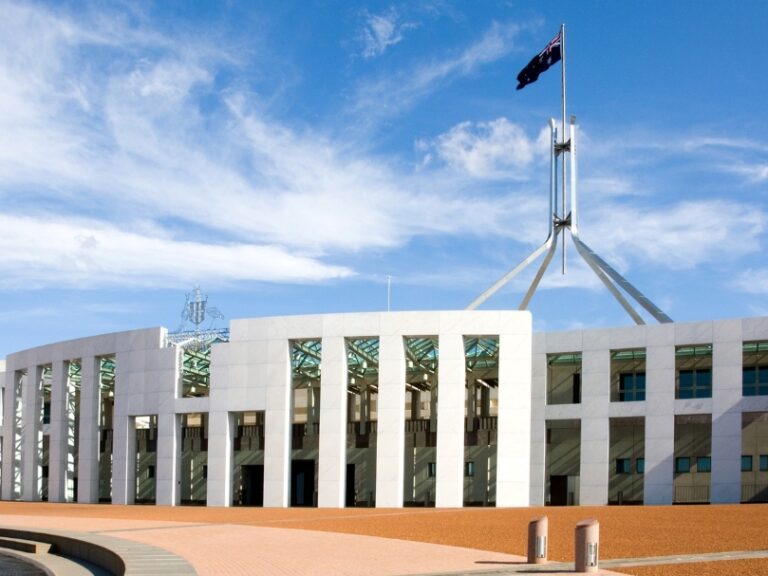
AASB 17 and Hindsight Adjustments: What PHI Funds Need to Know
Hindsight adjustments, adjustments to the year-end accounts using post-balance date data (e.g., July and August payments data), are common in the PHI industry.
But initial interpretations of AASB 17 by the Actuarial Taskforce thought they were no longer permitted. As AASB 17 has been implemented, that thinking has been challenged and changed.
Previous practice
Under AASB 1023 General Insurance Contracts and AASB 110 Events, if there was new information that would materially change the financial statements after the reporting date, and until the financial statements are signed, this had to be disclosed. Where the new information impacted the outstanding claims, they were restated, incorporating the new information (an adjusting event). Where they impacted the insurance liabilities for the unearned business (or remaining coverage), the impact was disclosed but no change was made to the financial position (a non-adjusting event).
In the private health insurance (PHI) industry in Australia, adjusting the outstanding claims reserves based on post-reporting date information has been common, regardless of materiality. These changes are referred to as ‘hindsight adjustments’. This practice reflected a significant proportion of the outstanding claims, which are usually resolved within 1-3 months of the reporting date. Often, the extra 1-2 months’ data materially changes the outstanding claims reserves’ positions, although the change being material for the financial statements is less frequent. AASB 110 and AASB 1023 did not preclude non-material changes being made to the outstanding claims reserves based on post-year-end data.
Many funds set this up as a process for their financial year-end reporting, however numerous funds left final year-end positions unchanged. Thus, practice in the application of hindsight adjustments varied widely across the PHI industry. For those who did perform hindsight adjustments, the approach adopted to calculating the revised outstanding claims reserve also varied significantly between funds.
AABS 17 and the Institute Taskforce
Then, AASB 17 Insurance Contracts was released in 2016, a very long time ahead of its implantation year of 2023, when it would replace AASB 1023/NZ IFRS 4 for all Australian and New Zealand non-government insurers. Those insurers are only now reporting for the first time using the new standard. Insurers with a December year-end have finished putting together their first set of financial statements (for the year ending December 2023) under the new standard, and insurers with a June year-end are currently doing the same for June 2024.
The Actuaries Institute set up the AASB 17 Taskforce to assess the impact of the new standard, and to provide guidance on its interpretation and implementation.
The Taskforce interpreted Paragraph B55 of AASB 17 as ending the practice of hindsight adjustments.
In the first Information Note published by the Taskforce in 2018 (which was 192 pages!) the following on the use of post-reporting-date information[1]:
|
Question 3.20 What use can be made of data available post-reporting date AASB 17.B55 specifies that: The probability assigned to each scenario shall reflect the conditions at the end of the reporting period. Consequently, applying AASB 110 Events after the Reporting Period, an event occurring after the end of the reporting period that resolves an uncertainty that existed at the end of the reporting period does not provide evidence of the conditions that existed at that date. Information on conditions in place at the end of the reporting period (e.g. subsequent reporting of bond prices used in trading at the end of the reporting period) is data that can be used to estimate future cash flows. Data that arises from events occurring after the reporting period (e.g,. actual lapse rates, claim development, or new claims or events) should not be used to change the estimate of the future cash flows. New information or events may require disclosure under AASB 110 that a non-adjusting event occurred after the end of the reporting period. |
The Taskforce had, therefore, interpreted the word ‘event’ in B55 as any new information, and the first sentence of B55 on scenarios was interpreted to reference the probabilities that existed for existing uncertainties at the reporting date. Therefore, the Taskforce’s interpretation was that new information post-reporting date, including claims development, should not change the insurance liabilities as at the balance date, regardless of whether it was for incurred claims or remaining coverage.
Being one of the earliest and most comprehensive reviews of the implementation of AASB 17, many actuaries and a number of PHI funds followed the Information Note’s interpretation when setting up their plans for AASB 17 implementation.
Implicitly, this presumably meant any material change due to post-balance-date information would become a non-adjusting disclosure under AASB 110, and that AASB 110’s section on adjusting events did not apply to insurance liabilities.
An alternative view emerges
Jumping forward to 2023, many funds and auditors were finalising accounting policies and the first cut of AASB 17 results. In these discussions, it was identified that, the auditors had an alternative view of the interpretation of B55 and the relationship between AASB 17 and AASB 110 from the Taskforce.
The alternative view was that ‘events’ in paragraph B55 of AASB 17 were only referencing new claims as events; i.e., claims incurred after the reporting date. This would mean the restriction in AASB 17 on making adjusting changes based on post-balance-date information only applied to the remaining coverage at the reporting date.
Therefore, the Liability for Remaining Coverage could not be adjusted for new information, but for the outstanding claims (which are a component of the Liability for Incurred Claims), adjustments for new information could occur. This view would mean there was no change in the relationship between AASB 110 and the Insurance Contracts’ accounting standard, and existing practice would continue.
Comparing two views and resolution
Both the institute taskforce and the auditor-led views agreed that for claims incurred after the reporting date, this information would be a nonadjusting event. The views disagreed on the treatment of post-balance-date information that impacted claims incurred on or prior to the reporting date.
The Taskforce’s view was that no adjustment to the Liability for Incurred Claims was permitted, and information that would materially impact the financial statements would be disclosed as a non-adjusting event. The alternative view was that they be treated as an adjusting event, and that non-material adjustments could also be made to the outstanding claims (and thus to the Liability for Incurred Claims).
Discussions on the interpretations occurred in a number of industry forums that had chosen or been created to discuss AASB 17. Most of these fed into the Transition Resource Group (TRG). The TRG is an AASB-organised public forum that discusses questions of implementation and is used to help inform the board of possible actions to resolve these issues. The TRG does not decide accounting policy and interpretation, but is certainly the avenue for discussing what industry norms are.
The interpretation of the hindsight adjustment was deemed sufficiently important to be raised in the March 2024 Transition Resource Group (TRG) meeting[2].
The discussions made clear that industry interpretation is that information that would materially change the Liability for Incurred Claims that arises post balance date, but before the financial statements are signed, should be allowed for as adjustments to the financial statements (in accordance with AASB 110).
Effectively, the status quo can continue
Although, if desired, the Institute Taskforce’s view can still be applied, it may be an outlier approach.
Many PHI funds who set up policies based on the Taskforce’s view on interpretation can now revert to existing practice where they prefer to. In some cases, some auditors will insist on changes. If a fund chooses to continue using the Taskforce’s view, they should confirm their auditors are happy with this, and also remember that changes that would materially impact the financial statements must still be disclosed – it is just whether that is an adjusting or non-adjusting event.
Those funds continuing to have a process to automatically adjust for post-balance-date information, may wish to check that process with their actuaries and auditors. Discussions around best practice did indicate some existing practices around assumption changes and treatment of the risk adjustment might not be seen as acceptable to all parties. A review of the hindsight calculation methodology may be due.
Anyone wanting more information is encouraged to check the paper submitted for the March 2024 TRG meeting[3], the minutes, and to discuss this with their auditors.
Actuaries, auditors and management in all insurance lines may want to remember that non-financial information that would materially change insurance liabilities, such as inflation, may require changes in the insurance liabilities. Remember that discount rates are financial information, so don’t apply.
Disclaimer: The views expressed above reflect the author’s personal interpretation of events and discussions within the various industry forums. Individual views may differ on these discussions.
References
[1] For context, the insurance liability is based on the value of the fulfilment cash flows, which are based on a distribution of scenarios, AASB 17.B38:
The starting point for an estimate of the cash flows is a range of scenarios that reflects the full range of possible outcomes. Each scenario specifies the amount and timing of the cash flows for a particular outcome, and the estimated probability of that outcome. The cash flows from each scenario are discounted and weighted by the estimated probability of that outcome to derive an expected present value.
[2] Australian Accounting Standards Board. (2024, March). Minutes of the AASB 17 Transition Resource Group meeting. https://aasb.gov.au/media/sw0na20b/aasb17trg_minutes-march2024.pdf
[3] Australian Accounting Standards Board. (2024, March). Minutes of the AASB 17 Transition Resource Group meeting. https://aasb.gov.au/media/sw0na20b/aasb17trg_minutes-march2024.pdf
CPD: Actuaries Institute Members can claim two CPD points for every hour of reading articles on Actuaries Digital.






